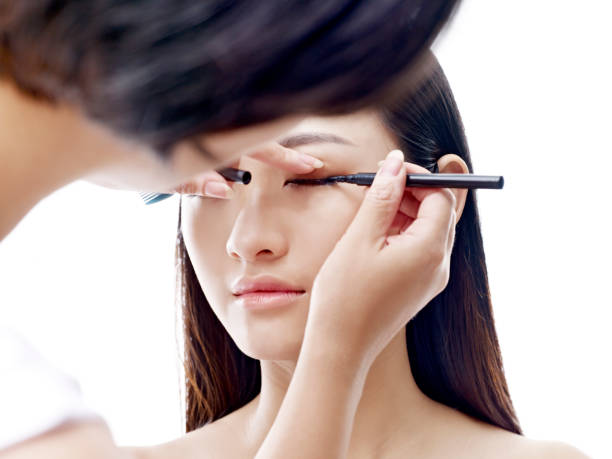Korean Cosmetics
0/5 stars (0 votes)
Korean Cosmetics has become one of the most popular cosmetic preferences for many people around the world. Even on Quora, we can find 'n' number of questions with regards to Korean Cosmetics and K-Beauty.
So, what is it all about?
History
Ancient Times: Records of the use of cosmetics in Korea date back to the time of the Three Kingdoms of Korea, and the use of makeup flourished during the Goryeo Kingdom. Cosmetics were made from lotions extracted from plants, including gourd stems; Ground mung bean contains saponin and was helpful for cleansing. Castor oils and camellia oils were used as hair oil. They had a pleasant smell and were not sticky. To moisturize and add gloss to the skin, safflower oil was used. Apricot and peach oils were used to remove freckles and liver spots. A powder called 'mibun' or 'bakebun' was made from ground rice and millet blended with water or oil.
Scents were added to extracts from grains and other plants, for example from dried clove buds. The perfume was also used to relieve stress and tiredness. The Gyuhap Chongeso, an ancient women's encyclopedia, includes various methods for making perfume.
According to Gyuhap Chongseo, eyebrows were the central feature of a women's face. The work describes ten popular eyebrow shapes. Crescent or willow leaf shapes were most popular. Plant ash was the basic raw material used for eyebrow ink, with which women drew their eyebrows in various shapes. The primary colors were black, blue, and dark brown.
Yeonji is the Korean name of rouge, which was used to color the lips and cheeks. It could be made from safflower.
In the Joseon period, luxurious makeup was forbidden because of Confucianism. Upper-class women tended to copy the makeup and style of gisaeng during this period.
Modern Times: Following the Treaty of Kanghwa in 1876, Korean ports opened to foreign trade, and Western Styles began to influence the country. New makeup styles and products became popular, stimulating Korea's cosmetics culture and enabling mass production and consumption.
Bakgabun, which means Park's powder, was the first mass-produced cosmetics item in Korea. It was the first Korean face powder and was a bestseller from 1916 to 1930. However, because of its lead content, sales then fell rapidly and similar products were quickly launched.
As a result of the dominance of Japanese cosmetic brands, Korean cosmetics failed to develop in the 1920s. After the country was no longer under Japanese control, the Korean War that began in 1950 further disrupted the economy. Finally, around 1961, the Korean cosmetics industry began to prosper after the passage of a law banning sales of other countries' products.
Cosmetics and skincare in South Korean culture
Korean people focus on skincare under the influence of TV programs, advertisements, and traditions. Koreans highly value even, radiant skin, and Korean women tend to vary their beauty care regimen with the season. They use different kinds of moisturizers such as cream for tightening pores (BB cream, blemish balm, or beauty balm) and lotions for lightening the skin (CC cream, color correction, or color control).
Korean generally apply makeup every day because it offers sun protection, a major concern. A big focus of Korean skincare is skin lightening, which is why many Korean cosmetic products have brightening properties. Skin brightening is not the same as skin bleaching, also known as skin whitening, which is a reduction of melanin in the skin. Instead, skin lightening is focused on treating hyperpigmentation.
In order to achieve a perfectly even skin tone, Korean women go so far as to perform a daily 8 to 10-step skincare routine. Traditionally, these extensive routines include makeup remover, double cleansing (i.e., consecutive oil and water-based cleansing), exfoliator, toner, essence (lightweight hydrating concentrates), treatments (boosters, serums, ampoules), sheet masks (thin cotton sheets doused in a liquid-based formula that claims to moisturize, brighten, and even treat fine lines), eye cream, moisturizer, and sunscreen.
Korean men are also interested in skincare. Some use BB or CC cream. Cosmetics manufactured specifically for men in South Korea focus on soothing the skin after daily shaving.
Industry
South Korea is home to several large cosmetic brands, many of which export their products worldwide. They include:
- Amorepacific, with brands including Laneige, Etude House, Innisfree, Sulwhasoo, and Mamonde.
- LG, with brands including Isa Knox, and The Face Shop
- Nature Republic
References;
1. Korean Cosmetics
by thewiki Editorial
Thu, 16 Mar 23 09:54:44
by Dr. Suhul Dhar
Tue, 20 Sep 22 06:46:03
Topics
Jammu & Kashmir - History, Culture & Traditions | J&K Current Trends | Social Network | Health | Lifestyle | Human Resources | Analytics | Cosmetics | Cosmetology | Forms | Jobs
Navigation
Quote of the Day
"Time Flies Over, but Leaves its Shadows Behind"



